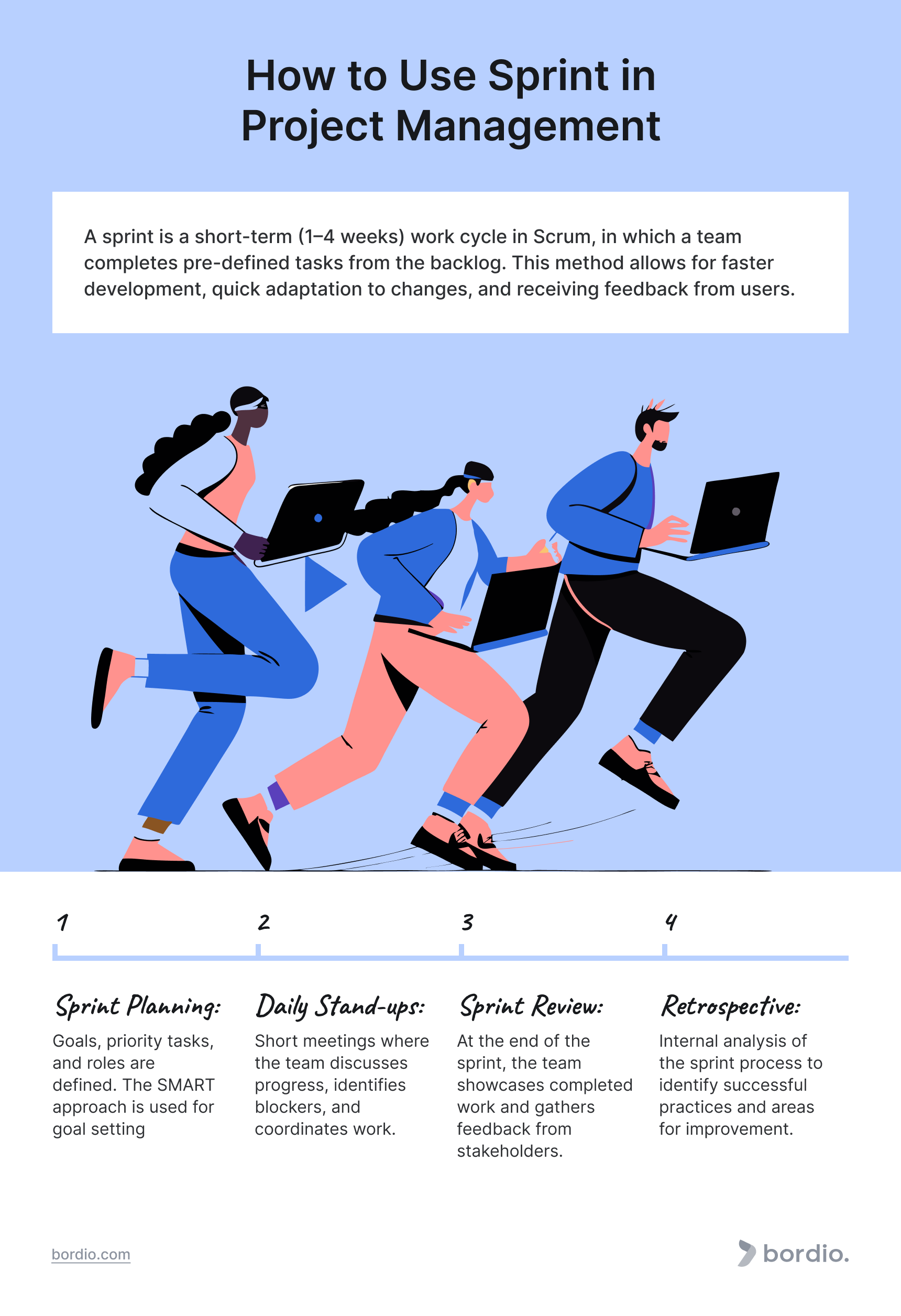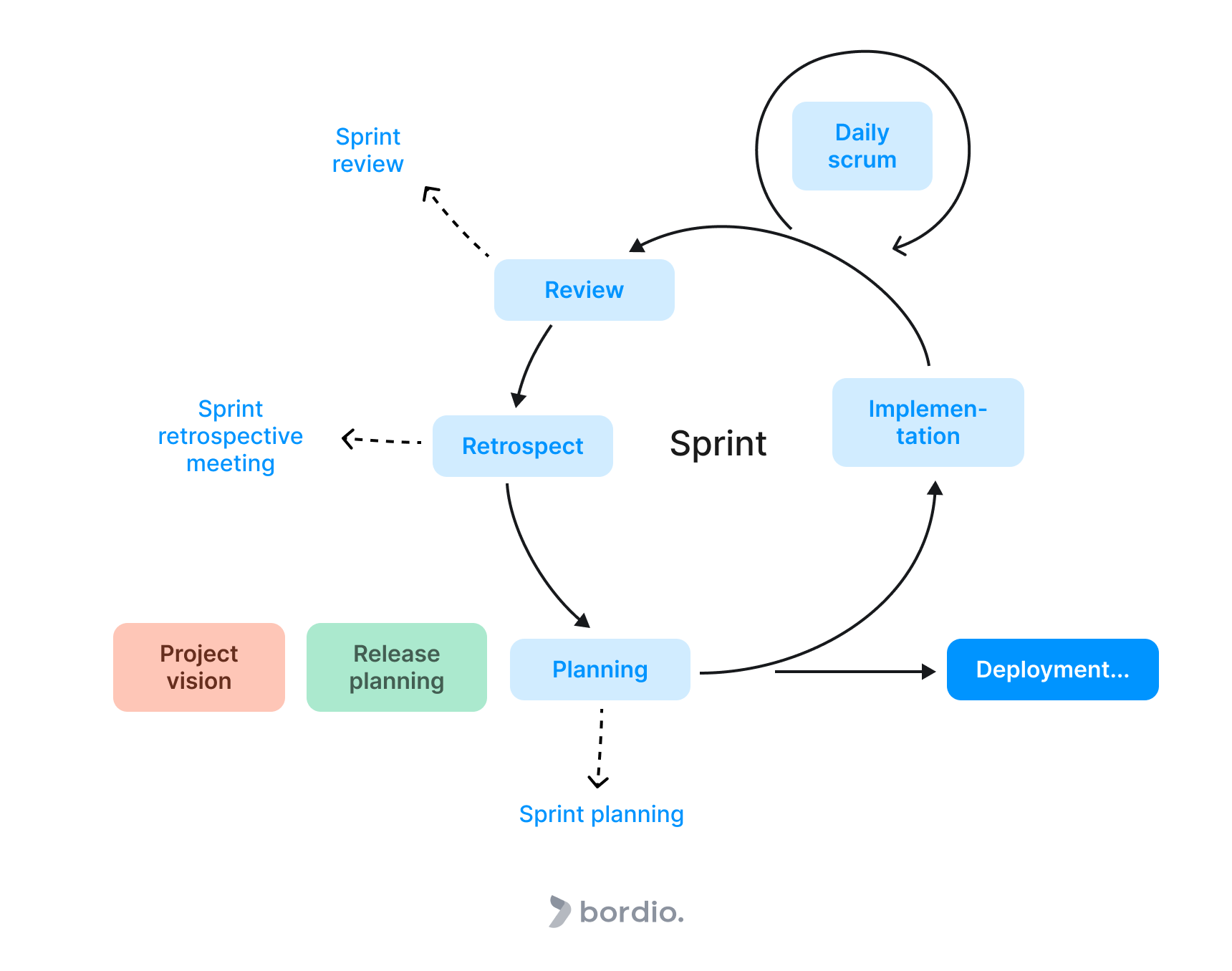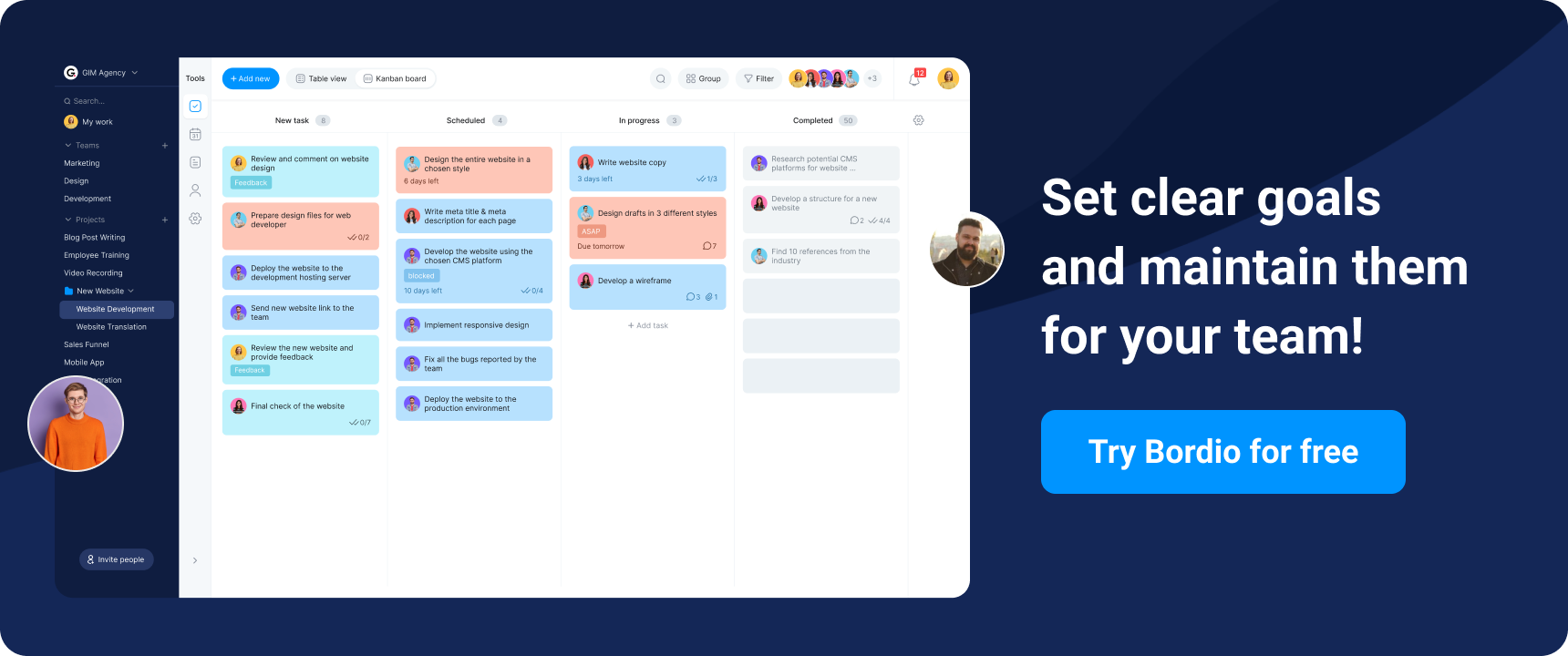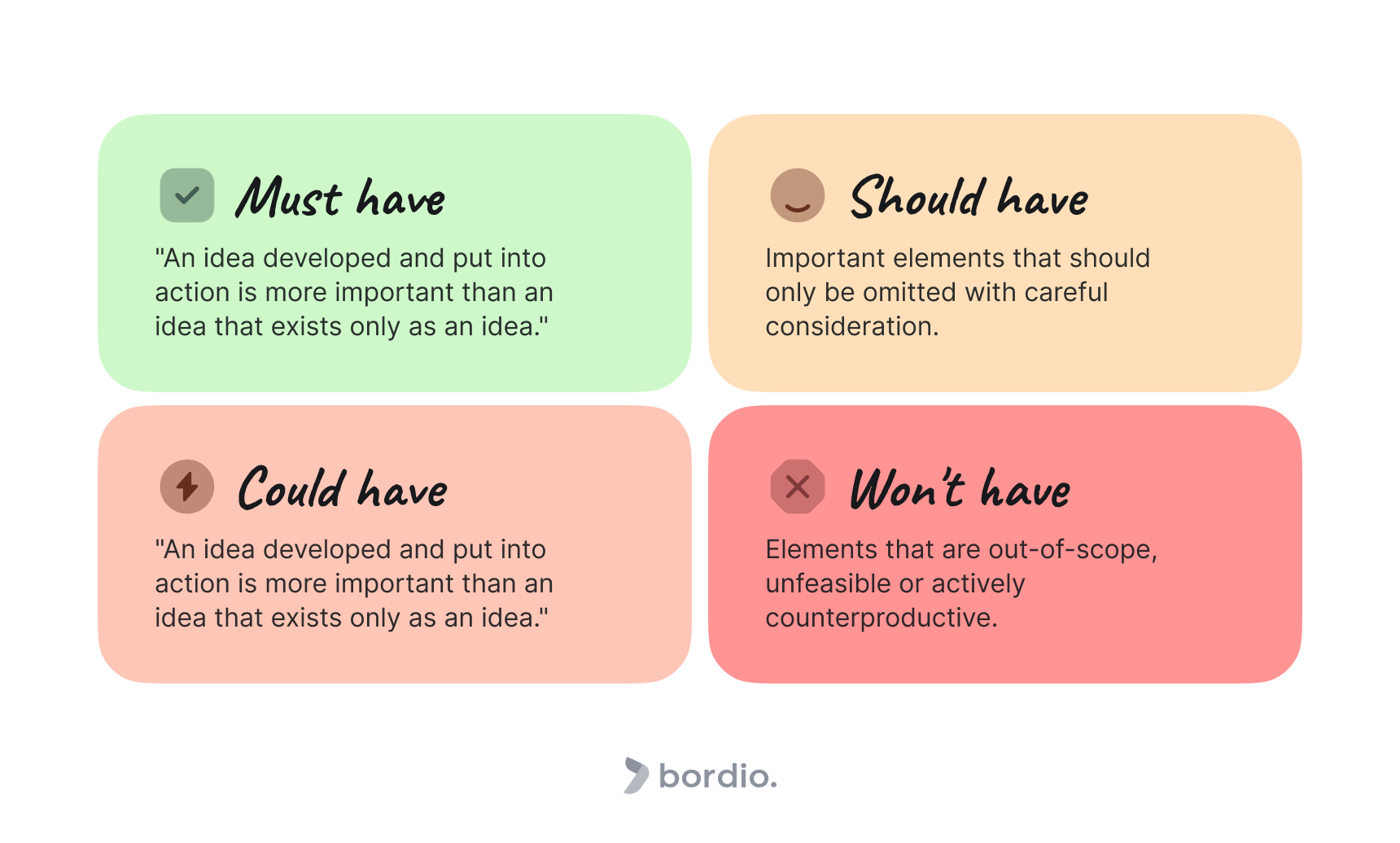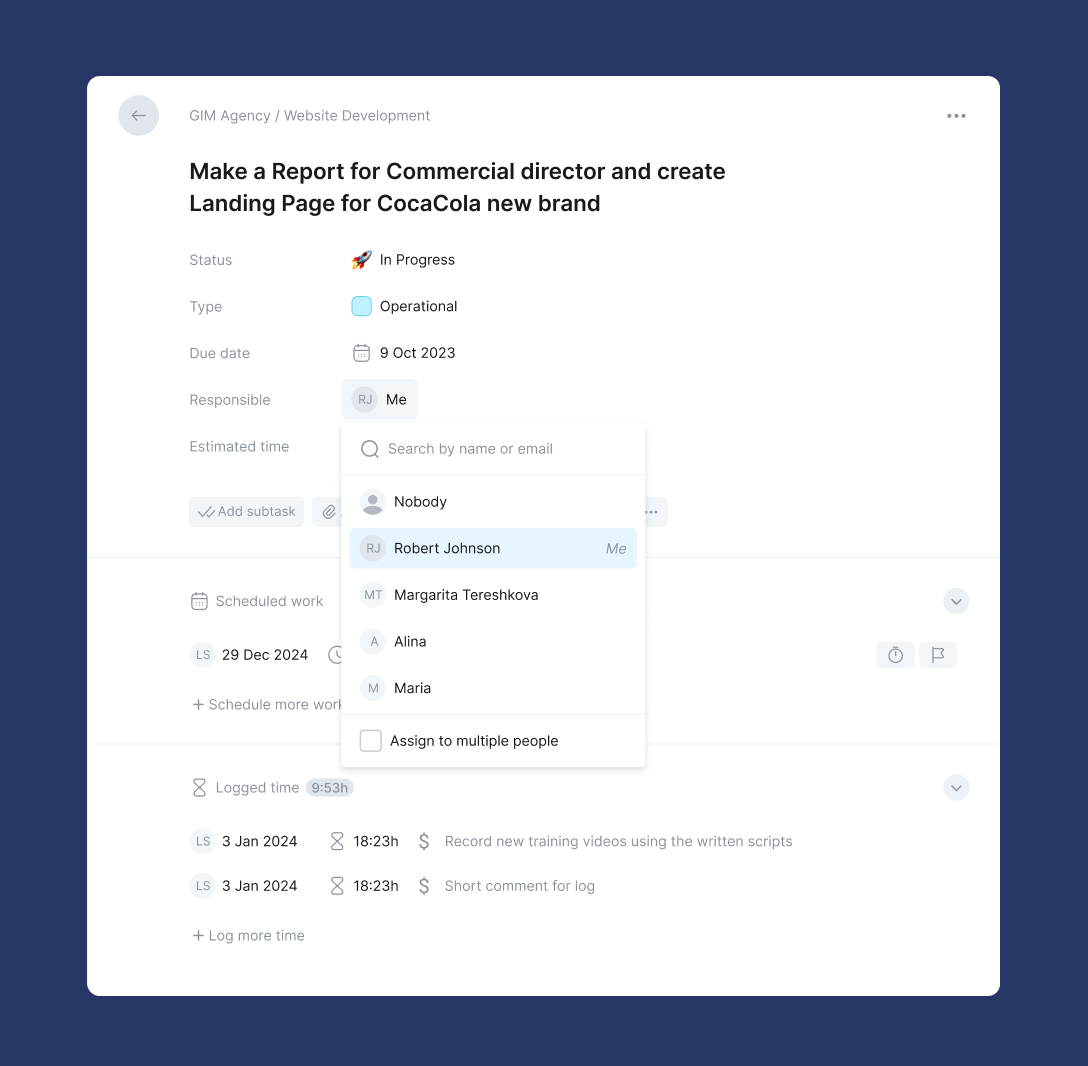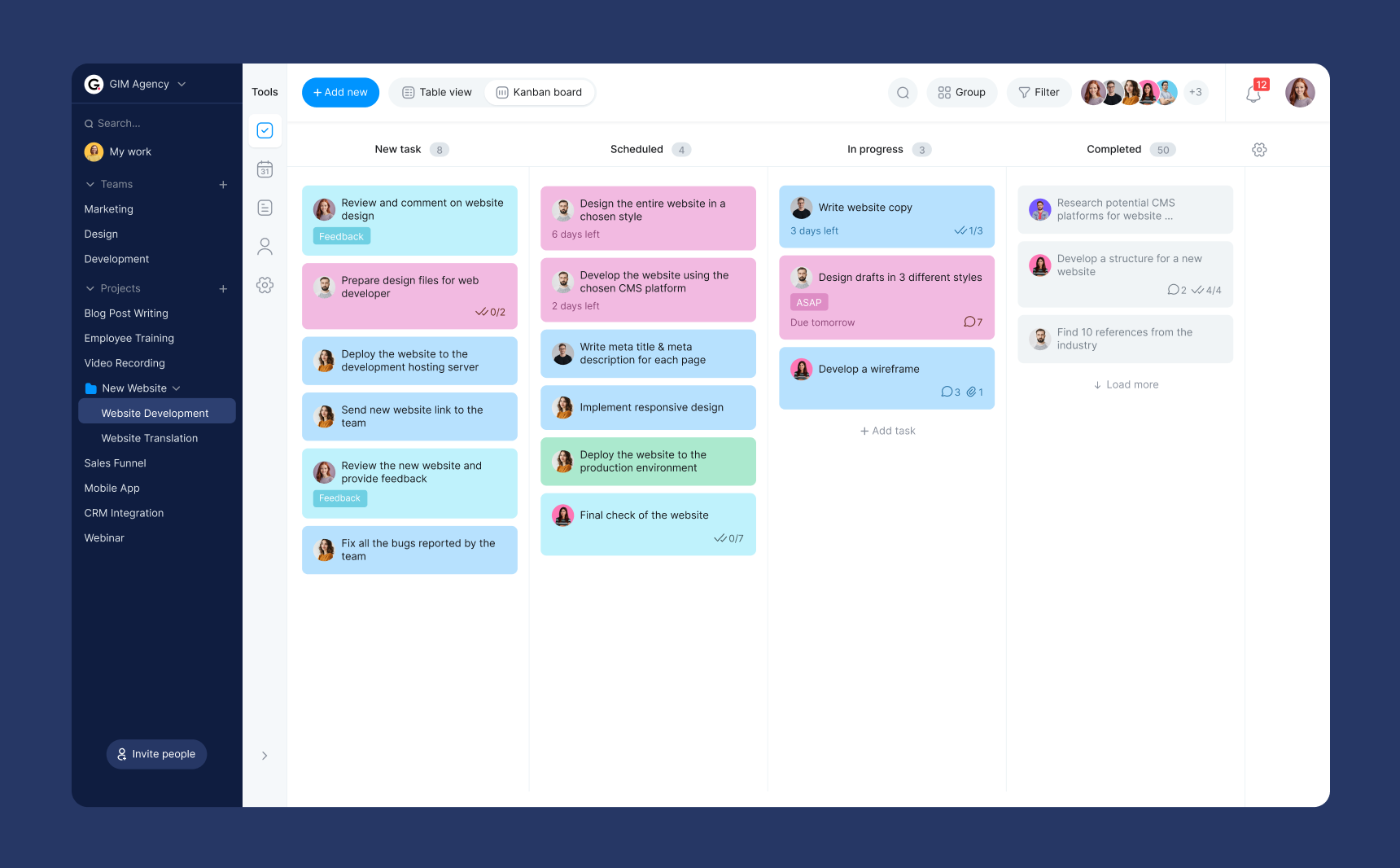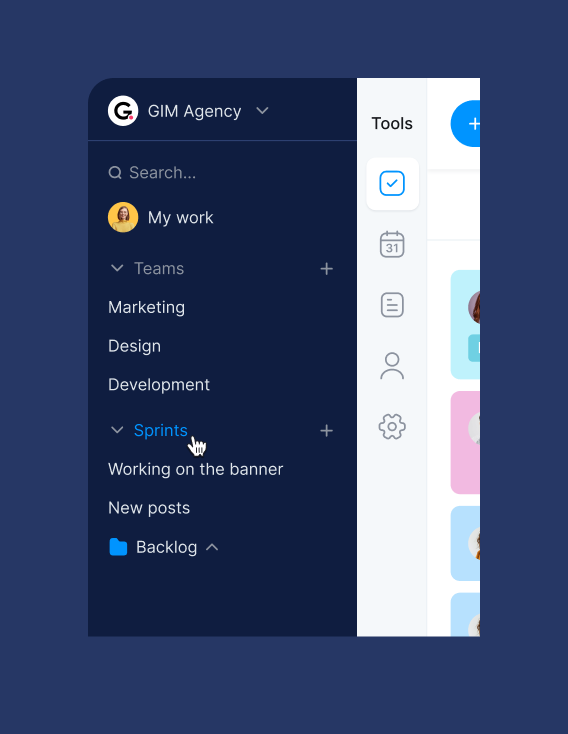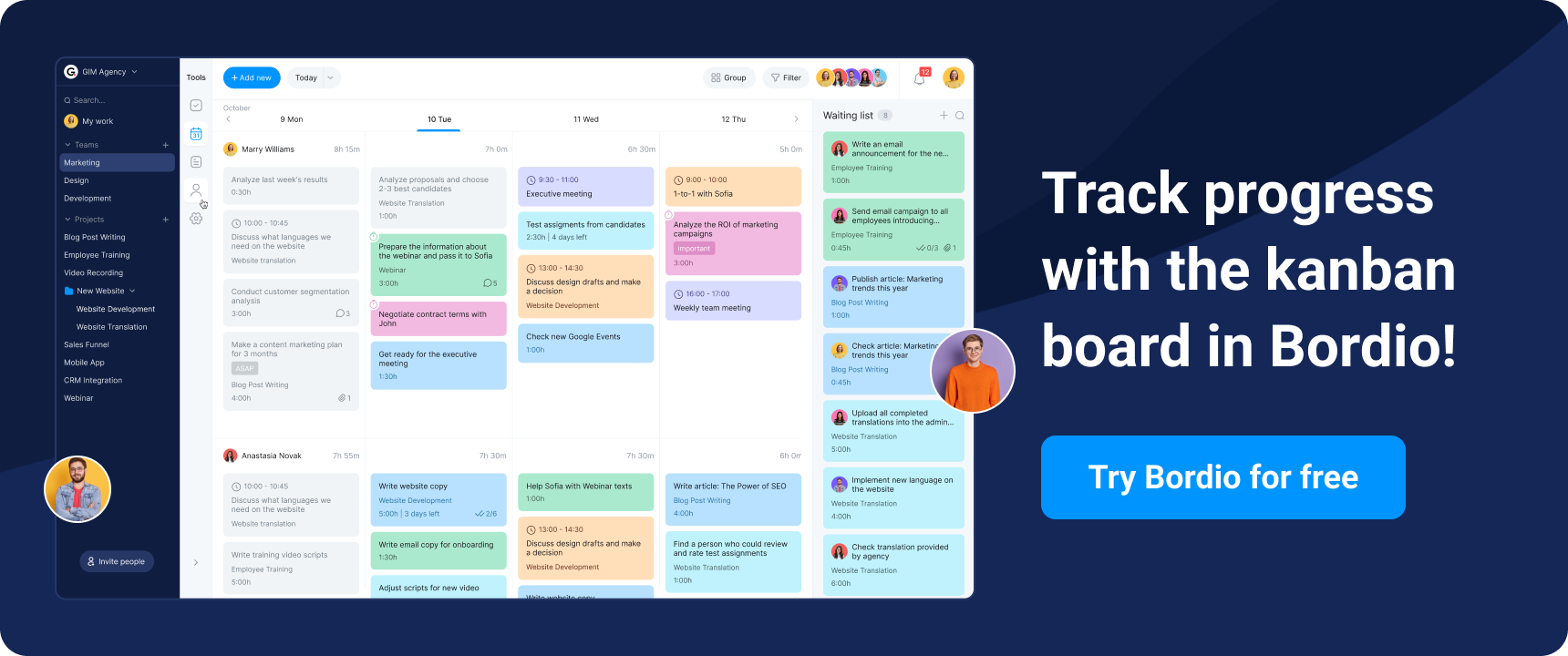Imagine transforming ambitious project goals into focused, achievable milestones, each moving your scrum team closer to the finish line with precision and purpose. This is the power of a sprint in project management, a central component of the scrum framework, which takes complex projects and breaks them into manageable chunks.
By structuring work into organized sprint cycles, software development teams gain agility, achieve quick wins, and adjust plans for the next sprint as needed—crucial for the demands of fast-paced agile projects. This article will guide you through the sprint method, from sprint planning session to execution, and how to leverage the Bordio project management planner for seamless, efficient sprint management.
What is a Sprint in agile project management?
So, we are already familiar with Agile methodology, a specific approach to project management used by teams worldwide. It is based on agile collaboration and customer feedback. Instead of getting the product at the end of the development process, the customer gets small chunks of the product the team is developing. This allows them to evaluate and influence the outcome with their feedback and thus be involved in the development. To get those little product details, Agile breaks up projects into smaller, more manageable units called sprints to get those little product details.
Tip: Learn about all Scrum meetings in our Project management blog!
A sprint in project management typically lasts one to four weeks, when a cross-functional development team works to complete specific tasks or deliverables from the sprint backlog and consists of four stages:
Stages of Sprint in project management
The sprint cycle in scrum project management is a structured cycle that enables teams to approach project tasks efficiently through well-defined stages. Each sprint includes specific phases to ensure alignment, foster continuous improvement, and deliver valuable outcomes for the project plan. Here’s an overview of each stage:
Sprint planning meeting
At the beginning of the sprint, the team has a sprint meeting to define the sprint goals and tasks to be completed. The team selects user stories from the product backlog that meet the upcoming sprint goals and can be completed within the deadline. During this session, team members gather to:
Define clear sprint goals
As in any business, we start a sprint planning session by setting clear and measurable goals. These are focused objectives that the software team should achieve by the end of the sprint following the overall project management plan.
To create practical sprint goals, start by involving the product owner, who you’ll ask to clarify them. Once you have the customer’s goals, you can tailor them to the SMART criteria – specific, measurable, achievable, relevant, and time-bound. For example, instead of a vague goal like ‘improve the application,’ specify something like ‘complete development of the user login feature by the end of the sprint.’
The goal can also be adjusted in the planning session using user stories if part of the product has already been built and user feedback has been received. The inclusion of user stories is necessary to keep the goals user-centric and allow the development team to focus on delivering tangible value.
In conclusion, when we have goals, we break them down into tasks. To maintain focus and commitment, make the sprint goals and tasks visible to all team members by adding them to the Bordio project management board.
Prioritize tasks
After setting goals and clarifying them, the next step is prioritizing tasks. Sprint task prioritization involves a straightforward process of evaluating the urgency and complexity of the previously outlined tasks. High-priority tasks have a substantial impact and manageable complexity, allowing the team to achieve meaningful results without overloading its capacity. The product owner remains a key figure here, guiding the team to focus on features and user stories aligning with their project importance perspective.
To streamline this prioritization, teams can use various methods such as MoSCoW (Must-have, Should-have, Could-have, Won’t-have) or value-based scoring, which help agile teams manage project sprints efficiently.
Assign Responsibilities
To ensure accountability and improve collaboration, each team member is given specific tasks from the sprint backlog, and roles and responsibilities are clarified. We suggest you to try using project management software for these purposes. You can easily assign responsibilities to your team members in the Bordio team task planner with just a few clicks—on task, then on “Assignee,” and choose one of the team members from the list.
The scrum master plays a unique role in this process, ensuring that tasks are distributed evenly and match each team member’s skills and capabilities. For instance, tasks requiring deep technical knowledge are assigned to those best suited to handle them, while tasks related to user stories can be taken on by another team member with the necessary knowledge.
Daily stand-up
The second key to a successful sprint is daily stand-ups. These meetings ensure that all team members stay aligned on project progress, keep priorities in check, and synchronize efforts. Stand-ups don’t necessarily have to happen daily for everyone—they can be tailored to team needs, taking place each day for some team members, individually with the project lead, or even less frequently based on the project’s demands. However, these meetings shouldn’t be neglected; they are short, targeted sessions and an essential agile practice that helps spot and resolve urgent issues during the sprint. We’ll focus on the classic daily stand-up format, which includes:
Sharing updates
Each morning, the team gathers to quickly review what they accomplished the previous day, what they plan to work on, and any blockers currently in the way. This daily alignment keeps everyone in the loop on each other’s progress and helps identify any dependencies or overlapping tasks. For example, if one team member is delayed on a feature, it may impact someone else’s tasks, allowing the scrum master or other team members to adjust as needed.
Removing obstacles
A major benefit of daily stand-ups is early problem detection. When a team member mentions a blocker or issue, the team can collaborate to find solutions or adjust resources immediately, preventing further delays. Stand-ups make it easy to address these obstacles right away.
Using Bordio’s visual tools, such as project tracking Kanban boards and color-coded statuses, team members can update tasks so everyone can see which tasks are on schedule and which may need extra attention. These tools keep the team focused by providing real-time visibility into sprint progress.
Each team member can quickly check the status of their tasks, maintaining accountability and ensuring tasks are consistently moving forward. This transparency keeps the team coordinated and focused on advancing user stories and sprint goals, which is essential for delivering valuable outcomes by the end of the sprint.
Sprint review
Sprint review is a meeting at the end of the sprint. The completed work is demonstrated during this session, and any issues are discussed. Team members come together to:
Showcase сompleted work
During the sprint review meeting, the team presents completed user stories and functionalities to stakeholders, including the product owner and other relevant parties. This demonstration provides an opportunity to showcase the value achieved during the sprint and offers a clear view of progress toward meeting established goals. The team needs to be prepared to explain how their work aligns with the overall project vision and to highlight any improvements made based on user feedback.
Reflect on the previous sprint
The sprint review is also a time for reflection. The team assesses what went well, the challenges they faced, and how effectively they achieved their sprint goals. This retrospective analysis helps identify successful practices and areas needing adjustment, ultimately fostering continuous improvement in subsequent sprints.
Sprint retrospective
After the sprint review, the team meets for a sprint retrospective. While the sprint review occurs at the end of each sprint and focuses on evaluating the work completed during the sprint, it involves the scrum Team—including the product owner, scrum master, and development team—and stakeholders such as clients and other relevant parties. The sprint retrospective occurs immediately following the sprint Review. It focuses on the team’s internal procedures. The primary purpose of the Retrospective is to assess the sprint to find areas for improvement and encourage successful practices. This session is attended only by scrum team members, including the product owner, scrum master, and development team, and no other stakeholders are present.
Tip: What are the main differences between a sprint review and a sprint retrospective? See the comparison in our article!
During the retrospective, team members review what went well during the sprint, examining the elements that contributed to their success and ensuring that those practices are continued in future sprints. They also share their obstacles and brainstorm solutions to avoid similar problems. Additionally, participants discuss strategies to improve communication and teamwork, creating a more cohesive and effective work environment.
Using Bordio for Sprint management
Bordio’s project planning calendar makes it easy to organize sprint workflows by structuring tasks and visualizing progress. How can we organize sprints effectively in Bordio’s interface?
The best way to manage sprints is by using the folders, projects, and Kanban board tools.
Step 1: Setting up folders and projects
- Create a “Sprints” folder. This folder will house all projects related to both active and completed sprints.
- Inside the “Sprints” folder, create a project called “Backlog.” This project will serve as the primary storage for all upcoming tasks, including:
- New feature tasks
- Bug fixes
- Other tasks to be done
- Optionally, create a “Completed Sprints” folder to archive all completed sprints and the tasks accomplished within them.
Step 2: Starting the sprint workflow
Create a new project in the “Sprints” folder for each sprint. Name each project according to the sprint (e.g., Sprint 1, Sprint 2). Select tasks from the backlog that are prioritized for the sprint and move them to the new project. Make sure tasks are chosen based on priority and workload that fits within the planned sprint length. Once the sprint is complete, archive it in the “Completed Sprints” folder.
Step 3: Track progress with the kanban board
Switch to the Kanban view in Bordio for the sprint project to track task progress visually. Set up stages to match your workflow (e.g., in the Scrum Board system, “Tasks/stories/backlog,” “To-do,” “Work-in-progress,” “Done”). Move tasks through the stages as they are completed. The Kanban board provides a visual overview of each task’s progress, making it easy to manage the current sprint effectively.
Agile teams can streamline sprint management processes by leveraging Bordio as a team task board. Features such as task assignments, real-time updates, and visual progress tracking enhance collaboration among team members. Incorporating user stories and focusing on the product owner’s priorities ensures that each sprint plan delivers meaningful results, driving continuous improvement throughout each scrum sprint.
Common challenges in sprint and how to solve them
Sprints can significantly enhance managing projects’ efficiency, but teams often face challenges that can impact success. Here, we explore common pitfalls and strategies for overcoming them in agile sprint management.
Scope creep
Scope creep occurs when project requirements expand beyond the original plan during a sprint. This can overwhelm team members, delay deadlines, and affect deliverable quality. Managing scope creep starts with clear boundaries in the sprint planning phase. A defined sprint backlog outlines specific tasks and ensures the scrum team understands the sprint’s limitations.
Building a team culture that understands the risks of scope creep encourages discipline and alignment with the sprint goal.
Ineffective communication
Communication issues can derail sprint success, leading to misunderstandings, misaligned priorities, and reduced morale. Scheduling daily stand-up meetings enables team members to share updates, discuss roadblocks, and align priorities, promoting transparency. These check-ins ensure team members know each other’s progress and align toward the sprint goal.
Collaborative tools like Bordio team management software enhance communication with features like task comments, real-time chats, and shared boards. A culture of openness allows team members to raise concerns freely, promote practical discussions during sprint retrospectives, and improve outcomes. Clarifying roles ensures that each team member knows their responsibilities, fostering accountability and reducing misunderstandings.
Underestimating workload
Accurate workload estimation is vital for effective sprint planning. Underestimating tasks can lead to burnout, missed deadlines, and reduced output quality. To improve estimates, teams can analyze data from previous sprints to gauge time requirements for similar tasks, allowing for more realistic timelines.
Estimation techniques like Planning Poker or T-shirt sizing leverage team insights and promote collaboration. Breaking down larger tasks into manageable sub-tasks enables precise estimates and helps spot potential issues early. Including buffer time provides flexibility for unexpected challenges. The team can improve practices and refine estimates for future sprints by analyzing estimation accuracy in sprint retrospectives.
Final Thoughts on Sprints in Project Management
Sprints are an effective technique in agile workflow because they arrange complicated projects into small, concentrated work periods. Sprint cycles enable teams to prioritize essential activities, maintain consistent momentum, and produce solutions that provide concrete value to the project. With project management tools like Bordio, teams can optimize the sprint process by visualizing tasks, tracking workload, and facilitating real-time communication. These steps help teams stay aligned and tackle challenges effectively.
In essence, the sprint approach blends precise planning with adaptable execution, making it a strategy that enables teams to deliver high-quality results, streamline processes, and meet project management objectives consistently.
